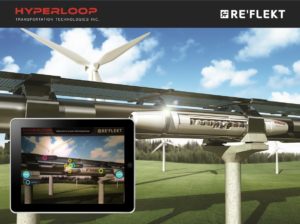Civic Resource Group Promotes Augmented Reality in Government
California lawmakers and agencies are poised to improve their service to citizens with Augmented Reality, according to a post on TechWire.net, the digital magazine companion to TechWire magazine focusing on the public-sector technology industry in California.
The post summarizes a presentation made by Gregory Curtin, founder and CEO of Civic Resource Group, during the Government Transformation conference in Sacramento, California. Curtain explained that Augmented Reality helps tap the full potential of the network of Internet of Things and can offer integrated, seamless solutions to citizens. One of the use cases proposed is to permit citizens to review plans to invest in new infrastructure such as roads and bridges. The workforce of government agencies could also experience significant productivity gains by having their manuals, expert advice, maps and diagrams readily accessible and superimposed on the real world.
Curtin also published a post on LinkedIn Pulse about Smart Cities and their use of Augmented Reality.
